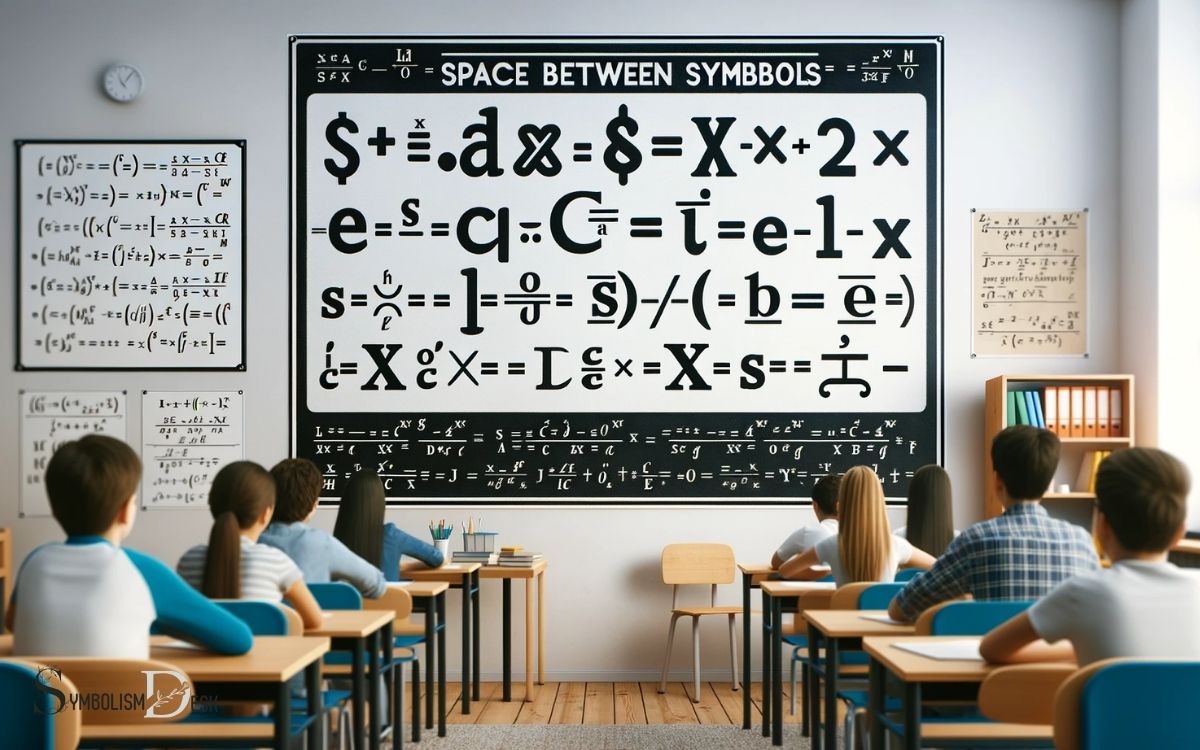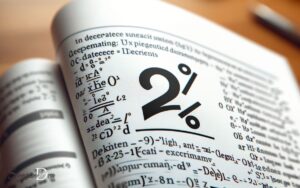Latex Math Space Between Symbols: Quad!
To insert space between symbols in LaTeX math mode, you can use commands like ,, :, ;, \quad, and \qquad to control the amount of spacing. For example, $a\;b$ will produce a medium space between a and b.
In LaTeX, spacing in math mode is crucial for readability and clarity. By default, LaTeX manages spacing around operators and relations automatically. However, there are instances when manual spacing adjustments are necessary.
Here’s a guide to the different spacing commands:
\,– produces a thin space\:– produces a medium space, equivalent to\>\;– produces a thick space\quad– produces a space equal to the current font size (18mu)\qquad– produces a double space of\quad(36mu)
For example, in a mathematical expression, you might need additional space around a plus sign for visual clarity: $a \; + \; b$.
In LaTeX math mode, precise spacing can greatly enhance the presentation of mathematical expressions, ensuring that each symbol is distinct and clearly understood. When using math mode, it is important to be mindful of both horizontal and vertical spacing to maintain a clean and organized appearance. Additionally, precise spacing can help prevent confusion and ensure that the intended meaning of the mathematical expression is conveyed accurately. Utilizing commands such as \mathcopy for the square math symbol copy can aid in achieving the desired spacing and visual clarity within mathematical notation.

Key Takeaway
Importance of Proper Math Spacing
The importance of proper math spacing in LaTeX is crucial for ensuring the clarity and precision of mathematical expressions. Math spacing refers to the appropriate placement of spaces between mathematical symbols, operators, and variables.
In LaTeX, accurate spacing is essential for maintaining readability and conveying the correct mathematical meaning.
Improper spacing can lead to ambiguity or misinterpretation of mathematical expressions, which is particularly problematic in academic and technical documents.
By adhering to the correct spacing conventions in LaTeX, mathematicians, scientists, and researchers can effectively communicate complex mathematical concepts with precision and clarity.
Understanding and implementing proper math spacing not only enhances the visual presentation of mathematical equations but also facilitates accurate interpretation, making it a fundamental aspect of typesetting mathematical content in LaTeX.
Commands for Adjusting Spacing
Commands for adjusting spacing in LaTeX math environments are essential for fine-tuning the placement of symbols, operators, and variables, building on the foundation of proper math spacing discussed earlier.
LaTeX provides several commands for adjusting math spacing, such as ; for a thick space, : for a medium space, and , for a thin space.
These commands enable precise control over the spacing between mathematical elements, ensuring clear and visually appealing expressions. Additionally, ! can be used to create negative space when necessary.
Understanding and utilizing these commands is crucial for achieving optimal spacing in mathematical expressions, ensuring that symbols are appropriately positioned for readability and comprehension.
Techniques for Optimal Symbol Spacing
Achieving optimal symbol spacing in LaTeX math environments requires employing precise techniques to ensure clear and visually appealing mathematical expressions.
Building on the foundation of proper math spacing, these techniques play a crucial role in positioning symbols for readability and comprehension.
One technique involves utilizing the ! and , commands to adjust spacing between specific symbols, while another involves using and to insert horizontal and vertical spaces.
Additionally, the command can be employed to create space for symbols that are not actually present. Furthermore, adjusting the font size and style can also impact symbol spacing.
By mastering these techniques, one can achieve optimal symbol spacing, enhancing the overall quality of mathematical typesetting.
Practical Examples of Spacing Adjustments
A crucial aspect of achieving optimal symbol spacing in LaTeX math environments is demonstrated through practical examples of spacing adjustments. For instance, when using the , command, such as in “a,b”, it adds a thin space between the symbols ‘a’ and ‘b’.
Similarly, the : command, used in “a:b”, adds a medium space between the symbols. On the other hand, the ; command, used in “a;b”, adds a thick space between the symbols.
Additionally, negative spaces can be employed using ! – for instance, “a!b” reduces the space between ‘a’ and ‘b’.
By utilizing these examples and understanding how different spacing commands impact the layout, one can effectively adjust the spacing between symbols to achieve optimal results in LaTeX math environments.
Tips for Enhancing Mathematical Expression Clarity
To ensure clarity in mathematical expressions, precise spacing between symbols plays a crucial role.
When working with LaTeX to create mathematical expressions, consider the following tips for enhancing clarity:
- Use Proper Spacing Commands: Utilize commands such as , for a small space, : for a medium space, and ; for a large space to adjust the spacing between symbols.
- Employ Math Mode: Always enter mathematical expressions within the math mode environment to ensure proper spacing and formatting.
- Be Mindful of Operator Spacing: Pay attention to the spacing around mathematical operators such as +, -, ×, ÷, and = to maintain clarity and readability.
- Utilize Parentheses: Use parentheses and brackets to group expressions and clearly define the order of operations.
- Consider Mathematical Fonts: Experiment with different mathematical fonts to find the best fit for enhancing clarity and readability.
Mastering Math Symbol Spacing in LaTeX
Mastering math symbol spacing in LaTeX is essential for ensuring precise and clear presentation of mathematical expressions. Within the context of LaTeX, mastering math symbol spacing is integral to achieving professional and polished mathematical notation.
Proper spacing ensures that mathematical symbols and operators are appropriately positioned, enhancing the overall readability and comprehension of mathematical content.
Mastering these spacing commands in LaTeX allows for precise control over the layout and presentation of mathematical expressions.
Conclusion
Mastering proper math symbol spacing in LaTeX is essential for enhancing the clarity and readability of mathematical expressions.
By using the appropriate commands and techniques, one can ensure that symbols are properly spaced for optimal presentation.
This attention to detail not only improves the visual appearance of mathematical content but also contributes to the overall understanding and impact of the information being communicated.






